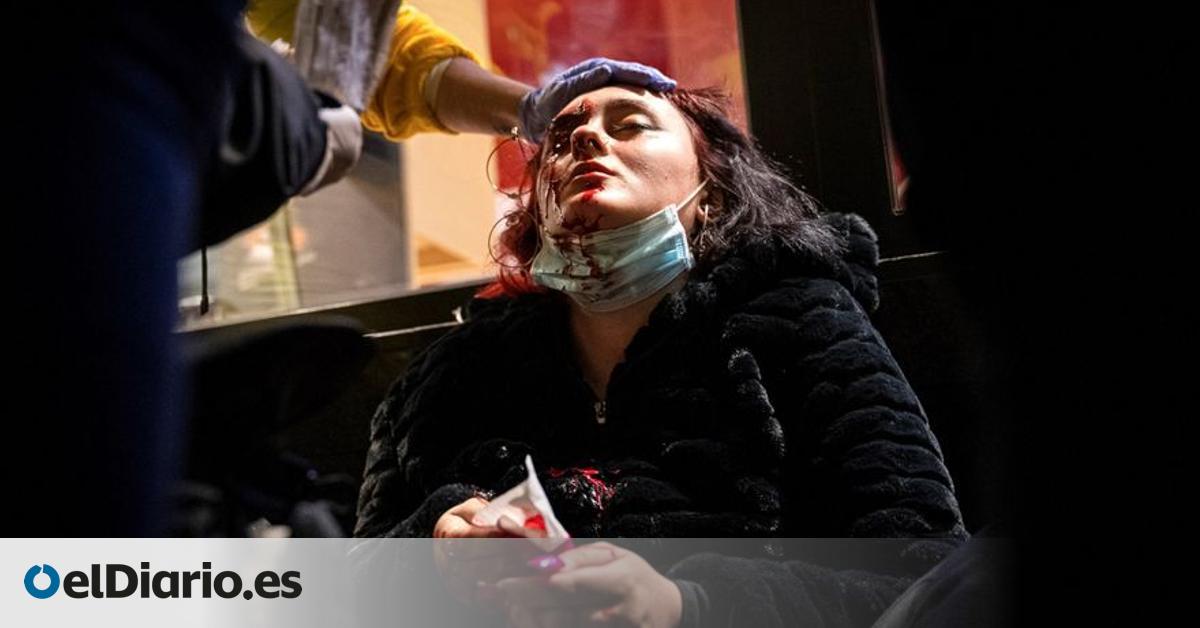
Barcelona judge Joaquín Aguirre has decided to exonerate the Mossos d’Esquadra for the loss of an eye that a young woman suffered during the protests over the imprisonment of rapper Pablo Hasel 2021. In an order, the magistrate not only discharges all responsibility to the Catalan police, but also considers that the young woman must “bear the consequences” of having attended riots.
The reproach that the magistrate makes to the young woman for having, in the words of the judge, “put herself in danger,” has outraged the family and the victim herself, who has written a response letter. “For the judge, my mutilation is considered fair because I exposed myself to it. Does that mean that it is not safe to go out on the streets to demonstrate? ”The young woman laments in the letter that her father read to the media.
The family has appeared to explain the appeal that both the private prosecution and the popular one from the Irídia center have presented against the file of the case to the three accused police officers (two foam gunners and their hierarchical superior).
The events date back to February 16, 2021. The Mossos fired dozens of foam projectiles to disperse a demonstration in favor of Hasel that had led to altercations. In her complaint, the young woman stressed that at the time of the injury she was with a group of pedestrians and journalists who recorded the events, “far away” from the cordon formed by the riot police, about 20 meters away, and “away from the area.” where launches could occur that would cause a risk to the police line.”
On the other hand, the judge blames the young woman for having participated in some altercations that, according to her story, attempted to “assault” a Police station, which caused the Mossos to have to fire foam projectiles. In his ruling, the judge does not assess whether the distance at which the agents shot complied with the protocols or whether, as established by internal regulations, they were able to shoot above the abdomen.
The magistrate focuses much more on the altercations and the “throwing of dangerous objects” that the agents suffered. “Given the incessant rain of objects it is impossible to fine-tune the shot,” considers the judge, who blames the young woman for “having put herself in a dangerous situation when the Mossos were forced to repel the forceful aggression of the protesters.”
“What is in no way to be expected is that the police forces do not react to an attack as serious and violent as the one they were suffering, which forces the complainant to bear the consequences of putting herself in danger,” the magistrate asserts.
The judge even compares the Barcelona riots over Hasel with the ‘Kale Borroka’: “If these events had happened in the Basque Country before the truce with ETA, they would have been classified as terrorist acts.”
In her letter, the mutilated young woman, who was 19 years old at the time, recounts the psychological damage suffered due to the loss of her eye. “I had to relearn to eat alone, I spent months in a medicated bed and receiving care,” she says. And she continues: “It started to make me sick to look at myself in the mirror and I got a complex about being looked in the eyes in case someone could realize that now I am a monster.”
The victim reports that since then she has been suffering from post-traumatic stress and serious anxiety attacks. An “endless set of obstacles,” as she describes it, which she believes the judge “does not care about.” “I’m going to have to continue waiting longer to try to get the justice I deserve,” she closes the text.
The young woman’s accusation, carried out by the lawyer Xavier Muñoz, maintains in her appeal that the judge has carried out “an early substantive judgment” on the case that does not correspond to him as an instructor, but is something that a court must carry out after a oral view.
For its part, the Irídia center, which exercises popular prosecution, has warned in its appeal that the judge confuses the ‘foam’ projectiles, a type of precision weapon, with the previous rubber bullets, which the Mossos used until their elimination in 2015 after the Ester Quintana case. “The entire argument is aimed at justifying police action, whatever it may be, due to the context of altercations,” the appeal criticizes.
Both accusations also insist that although altercations had previously occurred, at the time of the shot that left the young woman without an eye, she was “sheltered behind a container” and that there were no shots being fired at the police line. The appeals have been presented directly before the Barcelona Court.
Source: www.eldiario.es

